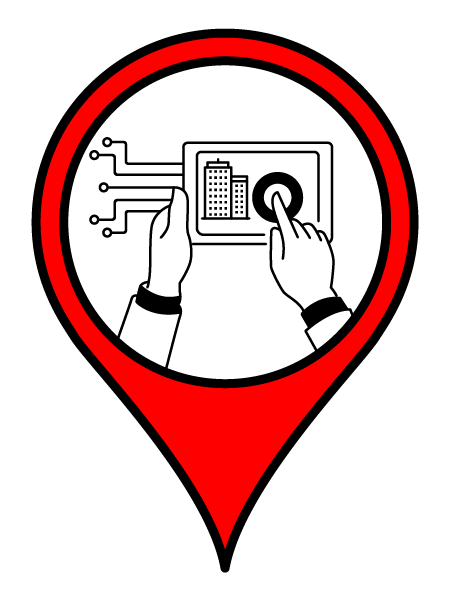Which Articles have helped shape your perspective ?
New survey data sheds light on three key reasons.
- 107
- 0
- 0
An office building made with cross-laminated timber in Tokyo, Japan. (Shutterstock) Meike Siegner, Ryerson University and Cory Searcy, Ryerson University In 2020, the extraction, transport and manufacturing of materials for the building sector accounted for 10 per cent of global greenhouse gas emissions. If buildings are to make meaningful contributions to keeping global temperature rise to 1.5 C above pre-industrial levels, limiting emissions from building materials is crucial. To achieve this objective, engineered versions of age-old building technologies, like wood, straw or bamboo, are critical. These bio-based building materials generally demand less energy in manufacturing and have the ability to
- 90
- 0
- 0
Trending
November 2021
Tim Oldman – Founder & CEO, Leesman
Reading time – 7 mins
Home vs office: let the battle commence
It’s time to address the failings in the home vs office debate. Organisations would do better to
- 59
- 0
- 0
Oh, the dreaded open office layout. Most people that actually work in an open office have a complaint at the tip of their tongue because open offices are
- 40
- 0
- 0
Workplaces need fresh air, not foosball tables and coffee bars.
- 42
- 0
- 0
The cubicle farm has to go. Offices must be places of magic.
- 45
- 0
- 0
Conversations about a shorter workweek are happening in some surprising places. Here's what's happening, country by country.
- 40
- 0
- 0
Organizations have become flexible about where and when employees work. But there are trade-offs.
- 71
- 0
- 0
Finance employees who couldn’t imagine working from home before the pandemic are now reluctant to return to the office. Their bosses can’t figure out how to bring them back.
- 50
- 0
- 0
What we learned about hybrid work this year, and what to do next.
- 45
- 0
- 0
Since lockdown, employees have adopted new work habits, but many execs want a return to the old normal.
- 60
- 0
- 0
Teams working digitally face new challenges to productivity and effectiveness. How can organizations best support them?
- 45
- 0
- 0
C.E.O.s are eager for employees to return — and afraid of alienating those who have grown accustomed to working from home.
- 55
- 0
- 0
The distribution of people in offices, homes, and cities will be governed by the rules of the online world. The consequences are disturbing.
- 54
- 0
- 0
The rise of remote work during the pandemic is just one part of a generational shift that is redefining how and why we do our jobs.
- 51
- 0
- 0
- 61
- 0
- 0
Without care, productivity and sound decision-making will suffer.
- 61
- 0
- 0
The main obstacle for workplace and people analytics has been employees’ discomfort with perceived surveillance and privacy.
- 81
- 0
- 0
The psychologist and TED podcast host was a keynote speaker at SAP’s SuccessConnect 2021.
- 63
- 0
- 0
The rapid growth of a breed of fast-learning, internet-enabled business organisations is likely to have a dramatic effect on our society at…
- 53
- 0
- 0
Following the rising cost of real estate and a desire to increase collaboration and communication among employees, the open-plan office has been trending over the past decades. Research about the impact of the open-plan office on humans is equivocal in endorsing this trend. The mixed results are further confounded following the specific job requirements, such as the need for privacy in jobs requiring a high level of concentration or, in contrast, the need for open workspace in jobs benefitting from team work and knowledge sharing. This study aims to understand the relationship between perceptions of three characteristics of the open-plan office (acoustical privacy, visual privacy, and office density), and the impact they yield on employees' judgment as well as affect-driven behaviors. The study benefits from the data from 456 employees located in 20 regional office locations within the same architectural firm. The restriction to employees of a design firm enables examinations of participants, who are already sensitive to the impacts of space by the nature of their work. The variables of interest included employee perception of the workspace (privacy, office density, and fit into workspace), employee rating of social relationships, self-reported mood (irritability) and optimal functioning (number of limited ability days), and work impacts (job satisfaction, work engagement, and job performance). The Model of behavior in an open-plan office setting based on affective events ...
- 58
- 0
- 0
What will the future of work look like? Here are predictions and recommendations. @Enterprisenxt
- 61
- 0
- 0
Remote working is making us more efficient, but is seriously damaging innovation. AI could change that
- 93
- 0
- 1
For the sixth consecutive year, we're highlighting the companies winning employee engagement and creating a great culture for their employees.
- 59
- 0
- 0
And how a "nature break" makes me a better leader.
- 54
- 0
- 0



@3x.png?_cb=1618177579)